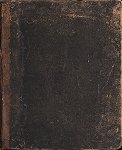diosma lincaris
Materia Medica
Pathogenically it produces: Somnolence; nervous insomnia; night sweats. Erratic pains, with bad humor, desire to weep or fear of sickness. Violent vertigo. Cephalalgia, chiefly frontal, radiating to the occiput. Eyes brilliant, with lachrymation or itching, the conditions accompanied by a species of stupefaction, with hardness of hearing or noises from aural pressure. Earthy face with disseminated rosaceous eruption. Nausea, fetid breath, with sensation of emptiness. Sensation of meteorism, with stinging pains in the spleen. Painful sensation in the abdomen, with pubic pressure-the pressure of the clothing becomes insupportable, with emission of high-colored, bloody urine. Frequent yellow diarrhoea, worse at night. Catamenia abundant, anticipating, sometimes metrorrhagic in type; crampy pains on ingesting food. Sensation of heat or of cold in the hands, with convulsive movements of the fingers. Weakness of the legs, aggravated by sitting down.
Clinically, this pathogeny should be useful in cerebral affections with dullness or stupefaction; in convulsive or epileptiform attacks; in hysteria; in hepatitis (cirrhosis or atrophy); in haematuria with ovarian or uterine lesions.
In splenitis, where it should surpass Ceanothus. Mental disorders in nervous or ascetic individuals, particularly where there is constant fear of death, or erotic or maniacal attacks. Gastralgia. Gastro-enteritis. Sudden fright, with trembling and weakness of the legs (Dr. C. Leal La Rota).
 Materia Medica Bücher kostenlos
Materia Medica Bücher kostenlos
